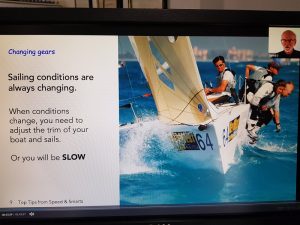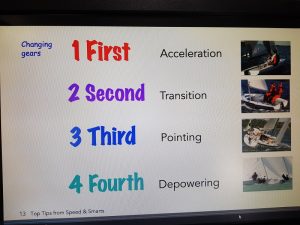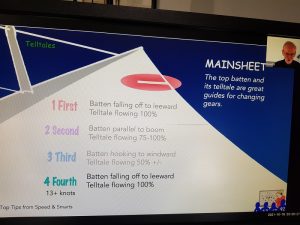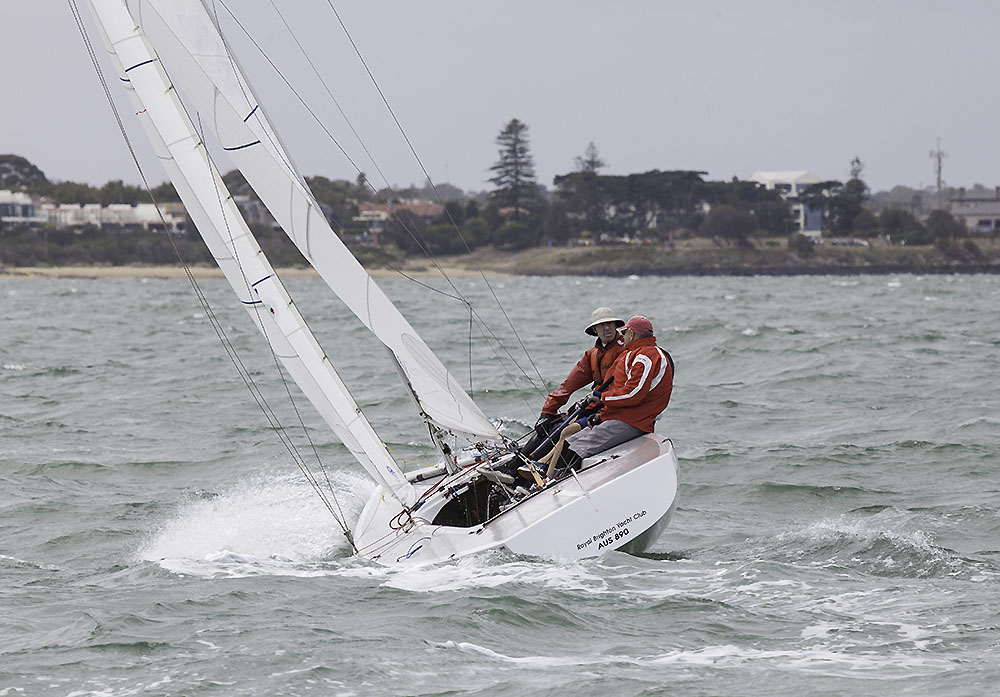

Today, Iim trying something different using screenshots to give a Guide To Changing Gears. I hope you enjoy it.
Dave Dellenbaugh has been giving sailors the benefit of his boundless sailing knowledge for over two decades. He uses an easy-to-follow format through his “Speed and Smarts” newsletters.
Visuals rather than longwinded explanations do a better job explaining the sometimes baffling concepts of our sport.
David’s style of webinar presentation is second to none and will appeal to a rank beginner through to a sailing legend who is looking to refresh their knowledge.
With thanks to David, I have set out below a couple of screenshots that I took from a recent Speed and Smarts webinar. I believe the screenshots give a great Guide To Changing Gears

When Conditions Change So Must The Gears

The Gears –

Gear Indicators Using The Mainsail

What the telltale tells You About Which Gear You Are In-
DOWN LOAD Dave Dellenbaugh’s Changing Gears Guide
If you like what Dave has provided, visit his website and explore the endless stream of Sailing lessons, Tips and Strategies available. https://www.speedandsmarts.com/
When sail trim is the cause of the problem, it’s usually the main, not the jib. The upper leech of the main provides most of your pointing ability. Be sure to trim the main so the upper batten is at least parallel to the boom.
If you need more pointing ability, try trimming the main tighter. You can hook the upper batten as much as 15 degrees to weather for short periods. Avoid the temptation to over trim the jib to help pointing ability.
Hooking the jib leech will choke the slot between the main and jib, stalling the entire sail plan. The jib should never have less twist than described in the “basic setup.”
Only after you’ve decided to trim the main harder should you try to pinch the boat. In this mode, the weather telltales on the jib will be stalled. In big puffs, the luff of the jib can break as much as 8 inches back.
This “super pinch” mode can only be held for short bursts and in flat water. Once the boat starts to slow down, be sure to ease the sails out, regain your speed, and then start the process again.
49 TIPS From Sailing Legends – FREE BOOK







